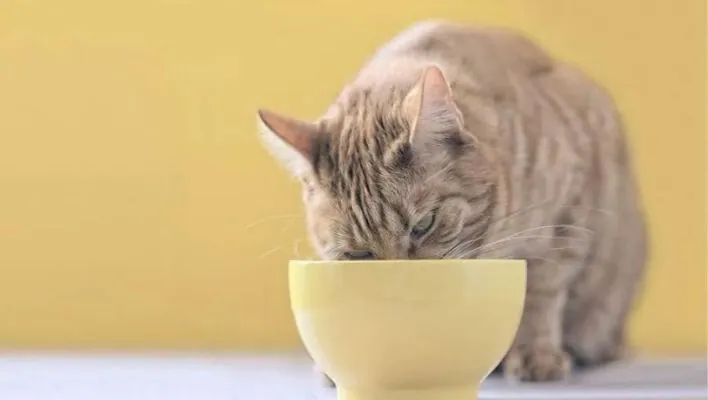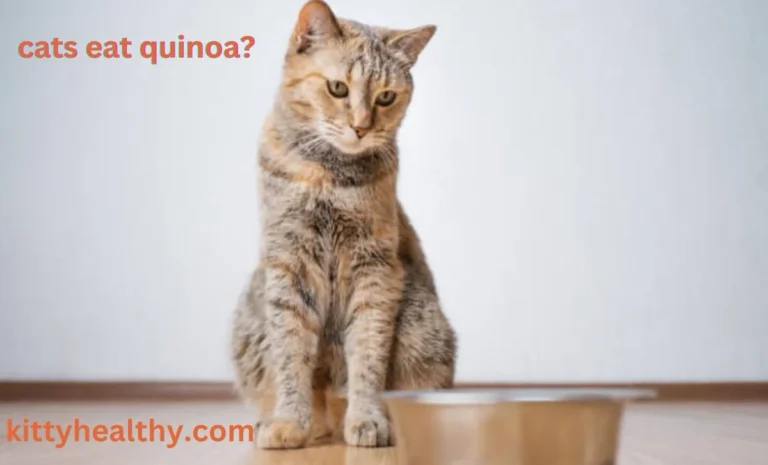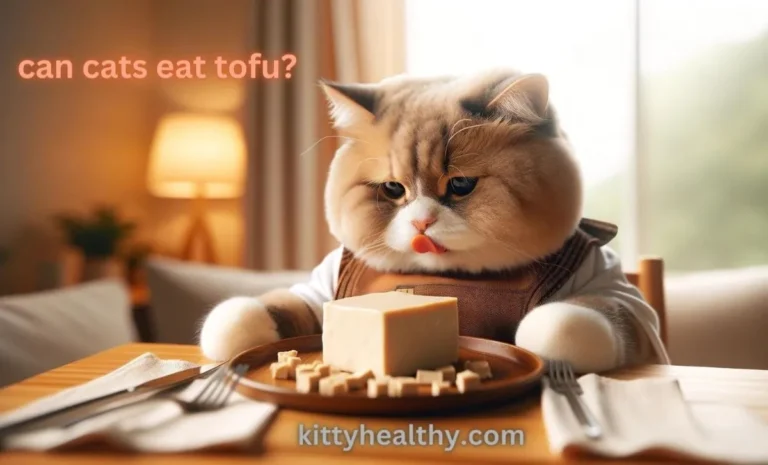Can Cats Eat Caramel? Safety And Alternatives
Can cats eat caramel? is a frequent inquiry from pet owners tempted to share their sugary snacks with their feline friends”. However, it’s crucial to understand that cats have specific dietary needs that differ significantly from humans.
As obligate carnivores, their diet should primarily consist of proteins, and the high sugar content in caramel, typically made from ingredients like sugar, butter, and cream, is not suitable for their digestive systems.
In fact, feeding caramel to cats can lead to health issues such as obesity and diabetes, conditions that are increasingly prevalent among domestic cats due to improper diets.
Additionally, certain ingredients often found in caramel treats, such as chocolate or the sweetener xylitol, are toxic to cats and can cause severe health complications.
What is Caramel?
Caramel has been a staple in the culinary world for centuries, originating from the simple act of heating sugar.
This process, known as caramelization, breaks down the sugar molecules and forms a complex, flavorful compound that ranges in color from golden to deep amber.
The basic recipe for caramel involves sugar, water, and heat, but variations include the addition of milk or cream, butter, and flavorings like vanilla or salt, which contribute to its rich, buttery taste.
Caramel’s versatility allows it to be used in a variety of culinary applications, from sauces and candies to decorative elements in desserts. Its ability to enhance flavor and texture makes it a favorite among chefs and home cooks alike.
Despite its popularity in human cuisine, the key ingredients of caramel, primarily sugar and dairy, make it unsuitable for cats, whose dietary needs are vastly different from humans.

Do Cats Like Caramel?
While some factors given below might explain a cat’s interest in caramel, it’s not a suitable or safe treat for them due to its high sugar and dairy content, which can lead to health issues.
Texture Appeal: The sticky, gooey texture of caramel might be intriguing to cats, as they often enjoy exploring objects with varied textures through their sense of touch and taste.
Smell: Even though cats don’t have a taste for sweets, the rich smell of caramel, especially when combined with other ingredients like vanilla or cream, can be enticing to their keen sense of smell.
Fat Content: The high fat content from the butter and cream in caramel might appeal to cats, as fats are an essential part of their diet and highly attractive to them.
Social Bonding: Cats may associate the act of their owners eating caramel with social bonding time and may approach to be part of the interaction, mistaking this as an opportunity to bond or receive food.
Mistaken Nutrient Seeking: Cats might mistakenly seek out caramel due to its creamy texture, confusing it with something that may contain proteins or fats they require, despite its lack of nutritional value for them.
Is caramel safe for cats?
Caramel is generally not recommended for feline consumption. While a small amount may not lead to immediate issues, habitual or significant ingestion could cause health complications.
The lack of necessary enzymes in cats to digest sugars means that the sugars present in caramel could lead to gastrointestinal discomfort, such as stomach upset or diarrhea.
Additionally, the elevated sugar levels in caramel might contribute to obesity and diabetes in the long term if consumed frequently.
The presence of milk or cream in caramel can also be problematic, as a considerable number of cats have lactose intolerance, which can exacerbate digestive problems.
Moreover, the various additives and preservatives in commercially produced caramel may pose risks to cats, given the lack of comprehensive research on their impact on feline health.
Considering these potential hazards, it’s advisable to exclude caramel and similar sugary snacks from your cat’s diet.

See also:
Safe Alternatives for Cats
Sure! Here’s a table of alternative foods to caramel for cats.
| Alternative Food | Description | Benefits for Cats |
|---|---|---|
| Plain Cooked Meat | Such as chicken, turkey, or lean beef, cooked without any seasonings, oils, or sauces. | High in protein, supports muscle maintenance and overall health. |
| Cooked Fish | Small portions of cooked fish like salmon or cod, ensuring all bones are removed and no harmful seasonings added. | Rich in omega-3 fatty acids, beneficial for coat and joint health. |
| Catnip or Cat Grass | Safe plants that provide entertainment and can aid in digestion. | Stimulates activity and can help with digestion. |
| Commercial Cat Treats | Treats specifically formulated for cats, available in various flavors and textures. | Tailored to meet feline dietary needs, often fortified with vitamins and minerals. |
| Cooked Eggs | Fully cooked eggs, served plain without any butter, salt, or seasonings. | High in protein and essential amino acids. |
| Pureed Pumpkin | Unsweetened, canned pumpkin puree, not the pie filling variety which contains spices and sugar. | High in fiber, aids digestion, and can help with hairball control. |
| Sliced Vegetables | Small amounts of cooked or raw vegetables like carrots or broccoli, ensuring they are cut into small, manageable pieces. | Low-calorie, high-fiber snacks that can add variety to the diet. |
FAQ’s
Cats should not eat caramel popcorn due to its high sugar and salt content, which can be harmful to their health. The butter and caramel coating can lead to digestive issues and obesity. Additionally, popcorn kernels pose a choking hazard and can cause intestinal blockages.Only plain popcorn is not toxic to cats.
Caramel is usually created with ingredients such as sugar, salt, cream, butter, and water. Except for the water, these components are not particularly beneficial for cats. Consuming sugar and dairy might lead to digestive discomfort for your cat, although in small quantities, they are not toxic or severely damaging
Rice cakes offer no nutritional value to cats and are low in fiber, protein and calories. Having rice cakes with some protein and fiber helps keep blood sugar stable, offsetting the sugar increase from the rice cakes.
What happens if my cat licks caramel?
If your cat licks caramel, it may experience a mild stomach upset due to the high sugar and dairy content, which are hard for cats to digest. A small amount might not cause serious harm, but it’s important to monitor for any signs of discomfort or unusual behavior. Regularly consuming caramel can lead to more significant health issues in cats.
Conclusion
Taking care of a cat means always being careful about what they eat. The question “Can Cats Eat Caramel?” is one that many cat owners might ask. The simple answer is that caramel and other sweet foods made for people are not good for cats.
As loving cat owners, we need to make sure our cats eat right and keep them away from foods that could hurt them.
By learning more and keeping our homes safe for our pets, we can help them stay healthy and happy for a long time. It’s all about being careful and making sure our cats are safe and well-cared for in our homes.


